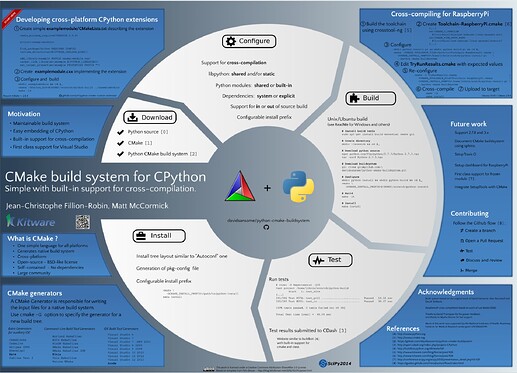The notion of it installing anything is self-evidently a strawman argument injected into the conversation. It’s nothing more complex or alarming or less expected than what pip, anaconda, homebrew, rust or golang do when they build from source, except that autoconf doesn’t do it.
That’s a link cited earlier on as an example of just what lengths people will/do go to in order to try and be able to create reproducible/embeddable builds of python.
Put another way: You went and looked at what 3rd party developers have to do to try and integrate Python into their projects, and you did not like it.
Because it’s not attached to the python project directly, that repository has all the burden and encumberment of trying to work around multiple versions and flavors of python and across multiple platforms.
Let’s for a moment assume that ‘./configure && make’ is sufficient for the majority of linux, mac and less-mainstream platforms.
Without looking, can you tell me how to build a static library on windows? And maybe then try it and tell me how that went?
A core point of this thread is that we don’t currently have one build system, we have 2 very different ones, three if you consider the scale of the Mac folder, and “many” if you look at the sheer number of user-built wrappers for the autoconf solution.
But let me finish by coming back to what I’m trying to ask here, by pointing to that link you gave again.
There are lots of examples like that out there, people who have had to go to insane lengths to be able to build python distros for embedding/vendorings under another build system.
Thanks to the many pull-requests and posts over the years where someone has tried to crap-out a half-baked cmsavebazeson build script that probably only worked for one version of PC/DOS build from 1987 these folks have put blood sweat and tears into building crazy, unwieldy multi-python-capable build project wrappers instead of contributing something much simpler and less painful to the Python project proper.
From which I draw the conclusion that for this to get any traction, there needs to be some preliminary discussion or decision by the core team: for anyone wishing to make such a proposal, what would merit or nix a proposal, or - sorry but I’m ending with a Python reference - what shall be the number of the counting?
